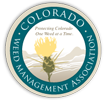
Zimmerman Pine Moth Control in Fort Collins
Damage caused by the zimmerman pine moth
The Zimmerman pine moth causes most damage in austrian pines, but they also attack scotch and ponderosa pines. The larvae tunnel into the inner bark on the trunk or branch, usually at branch crotches, causing branches to die or weaken and break during windstorms.
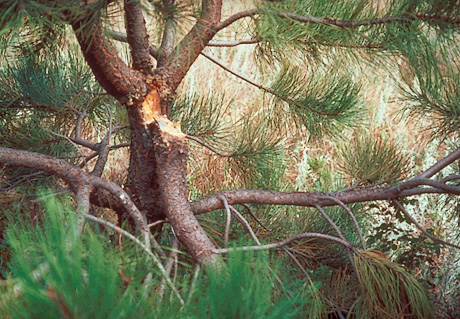 Minnesota Department of Natural Resources Archive, Minnesota Department of Natural Resources, Bugwood.org
Minnesota Department of Natural Resources Archive, Minnesota Department of Natural Resources, Bugwood.org
How to identify the zimmerman pine moth
The first sign of an attack by the zimmerman pine moth is a golf ball sized mass of pitch at the entrance to their tunnel on the trunk or branch. It may be shaped like a popped popcorn or a cluster of grapes.
The eggs are 1/32" long, ovoid, creamy white to reddish brown.
The zimmerman pine moth larvae are caterpillars, dirty white, light pink or green, and often found in the pitch masses. The can grow up to 1" in length.
The adults are midsized moths that fly at night, about 5/8" long and with a wingspan of 1.5". Their forewings are mottled gray with brown and red zigzag markings, and the hindwings are yellowish white.
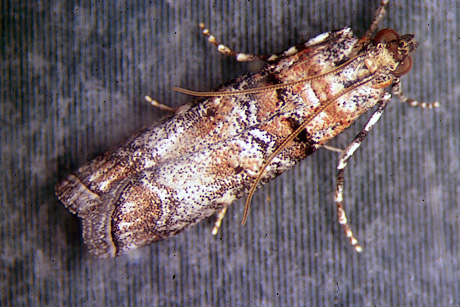 Whitney Cranshaw, Colorado State University, Bugwood.org
Whitney Cranshaw, Colorado State University, Bugwood.org
Life cycle of the zimmerman pine moth
Young caterpillars emerge from cocoons on the bark in early spring, mid to late April through May. They usually start tunnelling at an existing wound or where a branch meets the trunk, although sometimes they start tunneling near the tips of a branch. They feed on the inner bark, causing large masses of pitch to accumulate at the entrance to their tunnel by late spring or early summer. They feed until July, when they create a silk cocoon and pupate inside the pitch mass. Adult zimmerman pine moths emerge in late July from the pitch mass, mate, and the females lay about 40 eggs over the next 2 weeks on the bark of the tree trunk, often near wounds. These eggs hatch in about a week, and the larvae feed before tunnelling under the bark to overwinter in a silk hibernaculum before first frost.
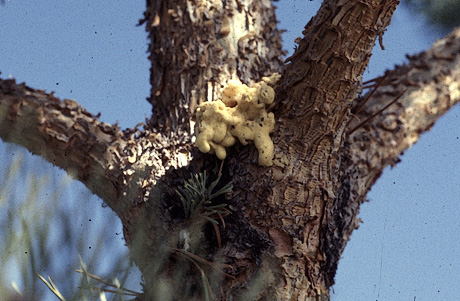 Whitney Cranshaw, Colorado State University, Bugwood.org
Whitney Cranshaw, Colorado State University, Bugwood.org
How to control the zimmerman pine moth
Maintain general tree health and remove heavily infected trees as the zimmerman pine moth will reinfest a tree year after year. Parasitic wasps are their natural predators. Zimmerman pine moths can be manually removed by cutting out the pitch mass and larvae with a pocket knife. Spray preventative insecticides on trunk in April to early May, and again in August before the larvae start tunneling under the bark.
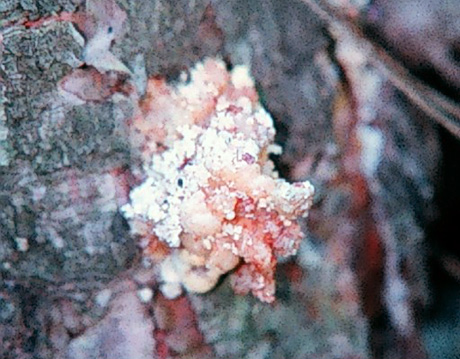 Rayanne Lehman, Pennsylvania Department of Agriculture, Bugwood.org
Rayanne Lehman, Pennsylvania Department of Agriculture, Bugwood.org
Other resources




